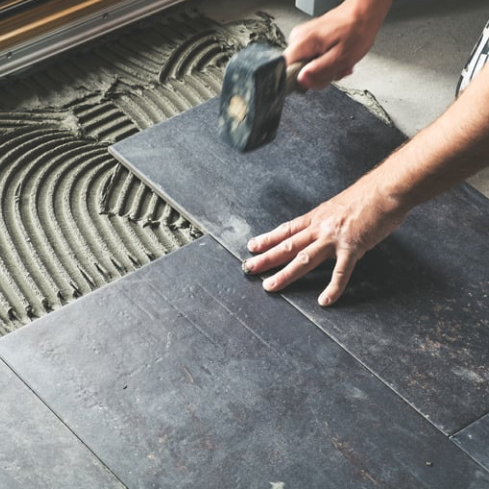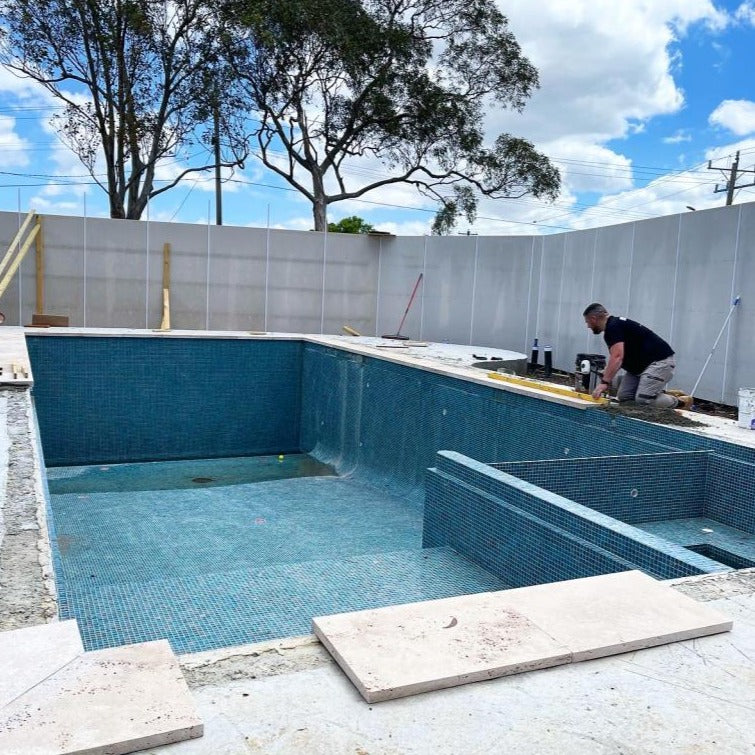Slip Ratings, Finishes, and Applications
In situations where there may be a risk of slipping, tiles play a crucial role in keeping you and your family safe. They are not merely for aesthetic purposes.
Yet, not all tiles are created equal, and there are a wide range of surfaces available. You can feel how differently some tiles could feel by touching a handful of them.
There are some tiles that feel smoother, some that feel like light sandpaper, and others that could feel a little more resistant. It's crucial to understand that a tile's feel does not always correspond to how slip resistant it is.
A tile with slip resistance typically has a surface finish that is textured. It is simple to assess whether a tile is appropriate for different indoor locations like bathrooms and kitchens, or outside areas like a patio or around a pool because we measure a tile's slip resistance by a Slip Rating.
What does "tile rating" mean?
Tile ratings are significant since tiles exist in a variety of forms, sizes, colours, materials, and finishes. International technical evaluations known as tile ratings are used to help you choose the tile that will best suit your demands.
What are the most important tile ratings that I need to know?
Rating for slip resistance: Among other things, tiles are renowned for their smoothness and hardness. The roughness of some tiles, however, makes them better suited for moist places like bathrooms, laundry rooms, and swimming pool surrounds. Slip ratings are created to make this process quick and easy to understand.
The "Pendulum Test," which gauges the amount of friction between a wet tile and a regular shoe, is the basis for slip ratings. From P0 to P5, it is available. The likelihood of slipping is decreased with increasing number.
P0 or P1 slip-rated tiles have a very high slide risk and shouldn't be used in any area where slip resistance is necessary, as around a pool.
Flooring with a P3 slip rating is appropriate for indoor use. All outdoor settings can utilise tiles with a P4 or P5 rating since they have a very low slip risk.
Wear ratings are available to help you choose which floor tiles will be a good match for your needs given the various levels of foot activity in your home since floor tiles can be vulnerable to surface abrasion brought on by foot movement.
Ratings for tile wear range from one to five. One is considered "low duty" and is appropriate for home bathrooms and bedrooms. Five is the "extra-heavy duty" wear rating for public walkways, retail malls, and hotels. Only use tiles with a wear value of zero for walls.
Which slip rating for a bathroom should I pick?
For wet rooms like the bathroom, kitchen, or laundry, pick a tile with a slip rating of P3 or above. Choose tiles with a P4 or P5 rating for outdoor areas in the vicinity of a pool.
Are slip-resistant tiles need to be cleaned specially?
Maintaining an optimum degree of slide resistance requires regular cleaning. High slip-resistance tiles, such P5 or R11, typically have a more textured surface and may take more work to clean. This is so that soap scum or filth can adhere to the tile surface much more easily because the tile surface is designed to be "grippy."
If I want my tiles to have a little diversity and texture, which tile grade should I choose?
Every tile that has a variation grade of V2 or higher will give you textures and patterns that are easy to discern.
How does "tile variation rating" work?
Digital tile printing technology has allowed tiles to advance to the point where numerous colour tones and designs are now possible within a single style. As a result, tiles may perfectly replicate the appearance of organic materials like stone and wood.
The scale goes from V1 (which corresponds to the uniform appearance of typical white wall tiles) to V4 (which denotes a significant diversity in colour, tone, and pattern, like what you'd see in brick-look tiles). In general, you'll obtain more contrast between the individual tiles the higher the variance rating.
Higher-rated tiles are appealing because they blend the look of natural materials with the simplicity of installation and minimal upkeep requirements of tiles.
How can I ensure that I achieve the desired look?
Examine samples at a showroom or in a real-world context before making a purchase because it is always ideal to examine tiles in person. This is especially true for tiles with a variation rating of V3 or V4, which can have remarkable colour, tone, and texture differences from piece to piece - all of which are a deliberate component of the aesthetic.
Asking your tiler to dry lay the tiles before installing them is another smart move. Before they are cemented and grouted, you will get a chance to examine how the outcome will look and make any necessary revisions.
Book a FREE Consultation
Expert Consultations: Book with us for Professional Advice and Services!



